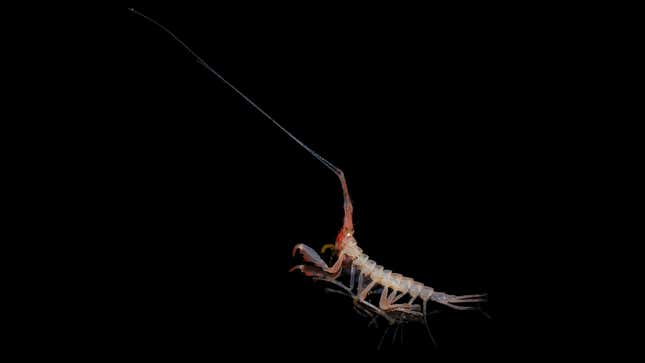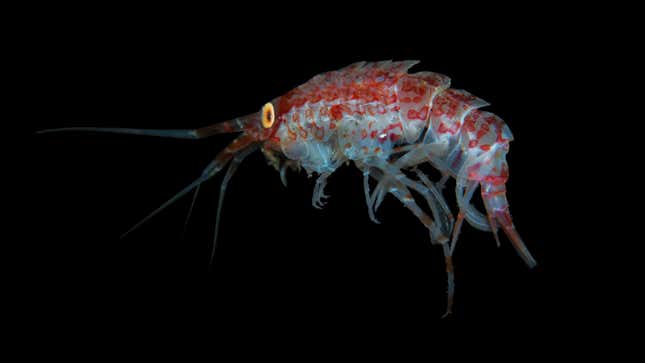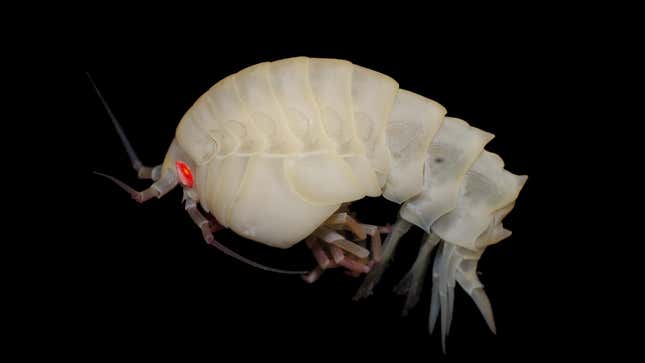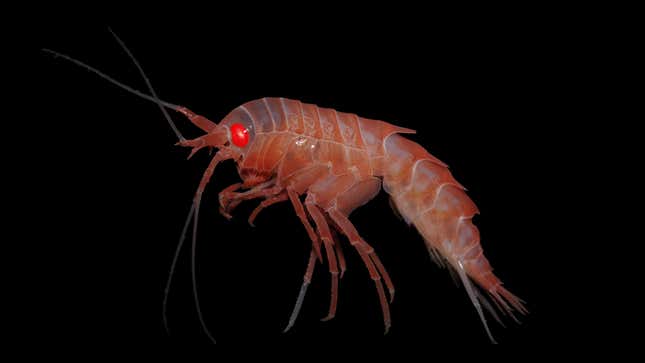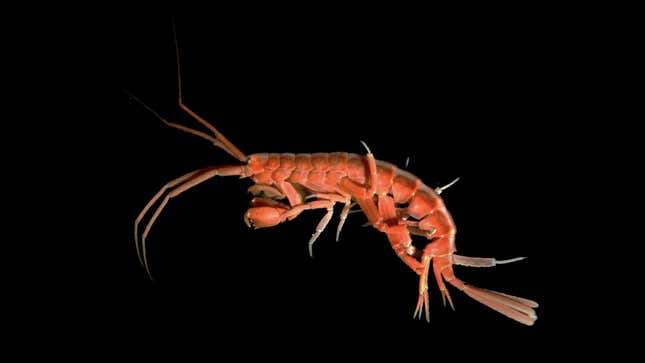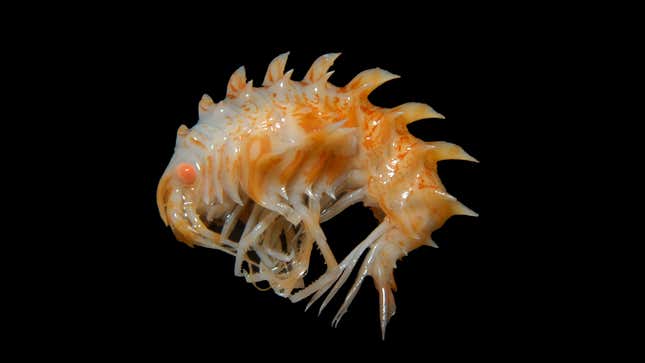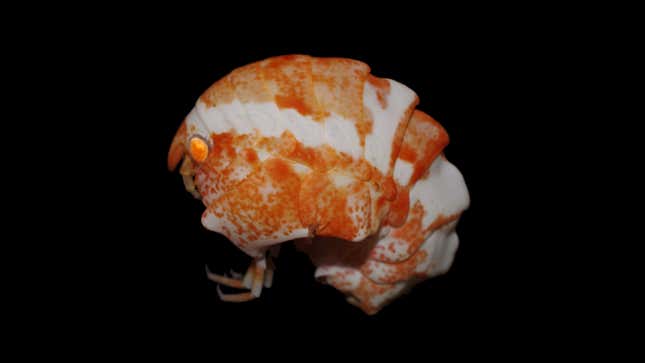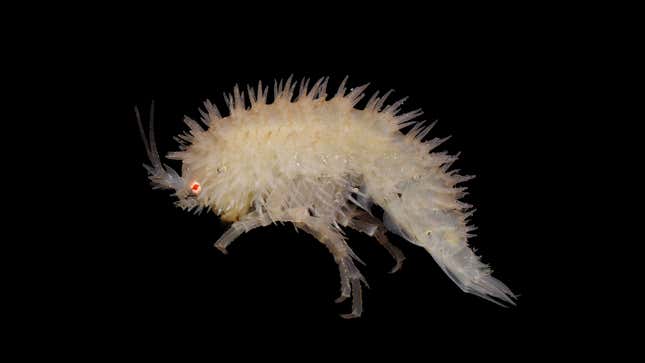
Antarctica is about more than penguins, seals, and spectacular (but disappearing) glaciers. Even the tiniest organisms at the bottom of the world are pretty stunning.
Amphipods lack the name recognition of other wildlife that inhabit Antarctica and the Southern Ocean. But consider them charismatic—if slightly creepy—microfauna. Without them, the Antarctic wouldn’t be what it is. Huw Griffiths, a marine biogeographer with the British Antarctic Survey, said there are 560 amphipod species that have been identified in Antarctic waters, with most hanging around on the seafloor.
“Amphipod crustaceans (sometimes known as sandhoppers) are the second most diverse invertebrate group in Antarctica (after the sea snails) and are found from the beaches right down to the deepest ocean trenches,” he wrote in an email. “This diversity means that they play an equally varied set of roles in the Antarctic food web, they are an important food source for higher predators such as fish, seabirds and mammals, but are also predators, grazers, and recyclers of dead and decaying material.”
Please join me in vibing with these little weirdos that keep the Antarctic going.
